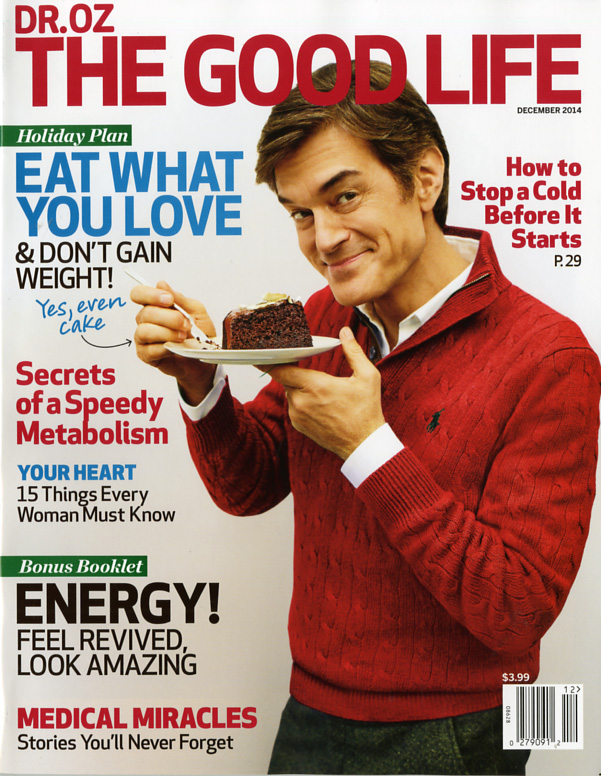 Dr. Oz The Good Life may be only two years young, but its success story is one that legacy titles may want to pay attention to.
Dr. Oz The Good Life may be only two years young, but its success story is one that legacy titles may want to pay attention to.
This is a story about consumer choice.
Dr. Mehmet Oz, beleaguered and embattled natural health advocate, has come under serious pressure by mainstream medical organizations like the American Council on Science and Health.
“After becoming America’s Doctor, courtesy of Oprah Winfrey’s television show, he transformed himself from a respected cardiac surgeon to a peddler of useless supplements and junk science,” notes this article from the ACSH.
Fallout included a public ending of support from Oprah Winfrey and her organization, which was largely responsible for launching Oz into public awareness in the first place. Around the same time The Good Life magazine launched, Oprah severed her support of the health guru, ending his spot on Harpo Radio. TV viewership for “The Dr. Mehmet Oz Show” plummeted around the same time, yet the print magazine absolutely took off.
“When the magazine launched in February 2014, it started with an initial rate base of 450,000 but a year later it increased to 700,000 and then to 800,000 just six months later,” writes Casey Welton in MinOnline. “What’s next? You guessed it, another increase. The magazine will jump up to 925,000 with the start of 2017. The math is pretty simple: that’s more than a 100% increase in three years. Not bad.”
It seems that, regardless of what mass media says about the man, his brand resonates with an ever-increasing segment of the population, in spite of what the medical industry or the FDA says about the man and his methods.
“The initial success of the magazine was propelled by Dr. Oz himself,” editor-in-chief Jill Herzig says. “Consumers rely on him for trustworthy guidance in a world littered with misinformation. They’re motivated by his energy and optimism, and they respect the decades he’s spent healing people, in the OR, on his show, and in his daily life. So of course they were thrilled that he finally had a magazine, and they jumped to buy it.”
Like other savvy media brands, Dr. Oz is making good use of other platforms as well, although print is the big money maker.
“Print isn’t the brand’s only platform, however, and it’s tapping into all the areas you’d expect a major publisher to explore in 2016—mobile, video, social, etc. September was the second-best month on record for DrOzTheGoodLife.com with 295,000 unique visitors,” Welton notes. “That’s a far cry from the millions of monthly visitors other Hearst brands are capturing, but it’s a 91% YoY increase since the site launched in September 2015. It monetizes that traffic through digital ad sales that are packaged in with print or served through multi-brand buys.”
Regardless of where one comes down in the scientific debate, the message of Dr. Oz’s success is clear: Find your audience and provide the information they crave, and you may find a level of publishing success that can withstand the seas of change and controversy in the fickle media landscape.
